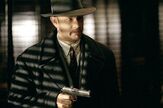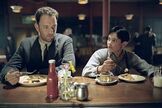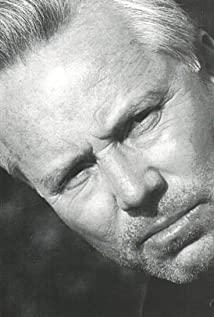superstar, violence, crime, suspense... Aside from everything, "Road to Destruction" looks like a fine art film no matter how you look at it. The camera is the most successful part of the entire film. The director is ingenious, and uses glass and mirrors to reflect those breath-taking shots: the fields outside the car window are replaced by the high-rise buildings in Chicago, and the body of Connie Ronney, who was beaten to death in the bathtub Bloody display in the mirror on the bathroom door. And the sea-facing window in the living room of Aunt Lisa's cottage. On one side of the window was the peaceful sea, golden sand, and little Micheal happily playing with his puppy, and on the other was the father staring at his son. All the grievances and hatreds are over, and there is a new life ahead, quiet and peaceful, just like the front. Unexpectedly, behind the father, there is a disfigured face and a dark muzzle. Only a gunshot shatters the father and son's longing for a new life and breaks the audience's relief.
Cool tones are undoubtedly one of the elements that make the film beautiful. At that time, the depressed America was cold, the cities were cold gray, the sky was cold blue, the wheat fields were cold green, and even the fire in the log house was cold. When the picture freezes in Aunt Lisa's living room, the sea and the beach are still outside the window, and the interior is still white walls, neat furniture and bright floors. The cold is so clean, so pure, and heartbreaking.
The scene where Tom Hanks' Micheal Saliven shoots Paul Newman's John Rooney on a rainy night is undoubtedly the best scene in the film. Micheal alone against John's bodyguards was supposed to be a hot scene, but the director used the beautiful and mournful piano music that Micheal and John had played together with four hands in a tacit understanding to cover up the gunshots that shocked the neighborhood. The cold rain covered up the jet of fire, and used John's aging back and tragic expression to cover up his inner struggles and regrets: between the son he hated and the adopted son he loved, he chose the former against his will.
Director Sam Mendes used his talent and big-name stars to use tepid performances without exaggeration and pretense to tell the audience about the 6-week escape of a father and son and two men. For the father, the road of flight is a road of destruction; for the son, the road of flight leads to a new life: on this road he atones for his sins, as if he had lived through a lifetime; on this road , he stepped on his father's blood and embarked on the road that his father yearned for but was never allowed to take by fate.
View more about Road to Perdition reviews










